Australian Three pence types
Threepences were minted from 1910 until 1964 with a few gaps. The early coins
were minted in London but from 1916 onwards, most threepences were struck at the
Melbourne branch mint. The ones which were not were minted in Denver and San Francisco
during WWII and at the Royal Mint in London in 1951.
The three pence was the smallest coin in the Australian Commonwealth series. 5/8"
(16mm) in diameter it weighed 1/20 oz or just 1.4g. Like other silver coins, it
was minted in sterling silver until 1945 and in quad alloy from 1946 onwards.
The series commenced in 1910 with a single year of issue bearing the effigy of
Edward VII. The obverse design was by George W. de Saules, even though he died in
1903 well before any Australian coins were struck. The reverse design featured the
Arms of Australia and was the work of William Henry James Blakemore.
King Edward VII died in May 1910 and was succeeded by George V. Australian threepences
bearing George V's effigy were minted in London, Melbourne and Sydney during the
years 1911 to 1936. There are no obverse die varieties reported for any of the threepences
of that period, suggesting that there was a single master die for the entire George
V series. The obverse design was by Sir Edgar B. Mackennal, an Australian sculptor
appointed to the Royal Mint in 1910.
Upon the death of George V in 1936 the crown passed to his elder son, Edward
VIII but he abdicated before any Australian coins were struck bearing his likeness.
His younger brother assumed the throne as George VI and the striking of Australian
threepences resumed in 1938 bearing a left-facing portrait of George VI on an obverse
designed by Thomas Humphrey Paget. As part of the general redesign of Australian coinage
a new reverse depicting wheat stalks was introduced. This design by George Kruger
Gray reflected the significance of agriculture in general and of wheat farming in
particular in 20th century Australia.
George VI had two daughters, Elizabeth and Margaret and in 1953 Elizabeth became
queen. The obverse design for subsequent threepences was by Mary Gillick and depicted
Elizabeth II facing to the right and continued in use until the cessation of minting
in 1964.
Obverse designs
Obverse 1 - 1910
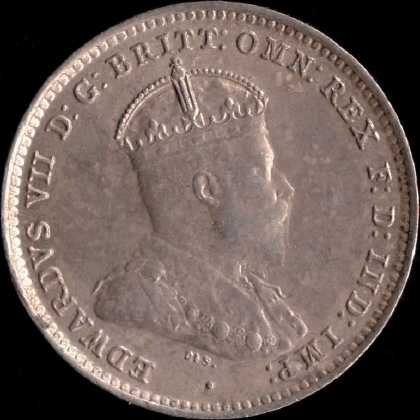
Obverse 2 - 1911-1936
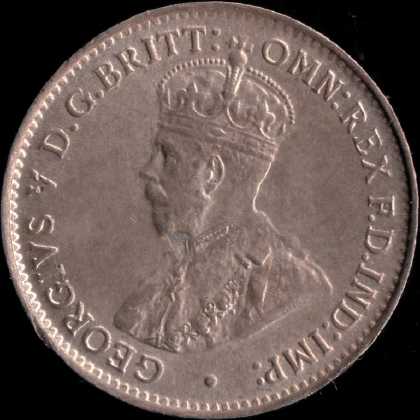
Obverse 3 - 1938-1948
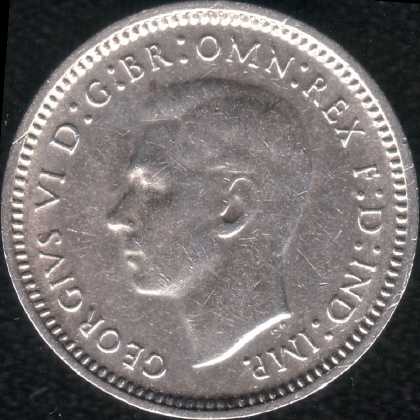
First of the George VI obverses. 114 rim enticles.
Obverse 4 - 1949-1952
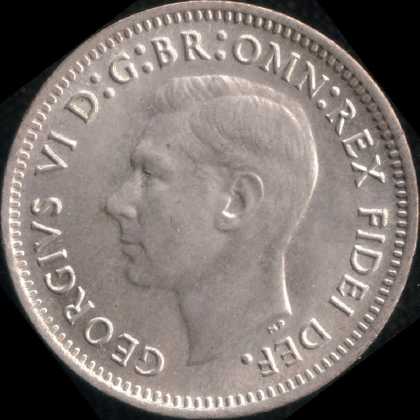
Second of the George VI obverses. IND IMP was eliminated from the legend, (necessary because India had become an independent nation in 1947) and F.D. was expanded to FIDEI DEF. 118 elongated rim enticles.
Obverse 5 - 1953-1954
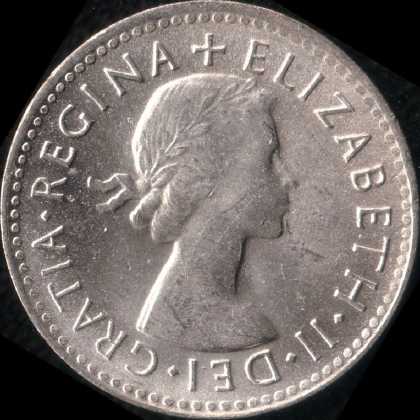
Obverse used for early Elizabeth II sixpences. The rim embellishment was changed from enticles to discrete round beads of which there are 89.
Obverse 6 - 1955-1964
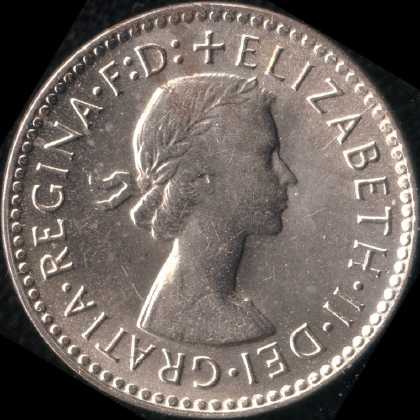
Obverse used for the later Elizabeth II hreepences. F.D. restored to legend. 87 rim beads.
Reverse designs
Reverse A - 1910-1922
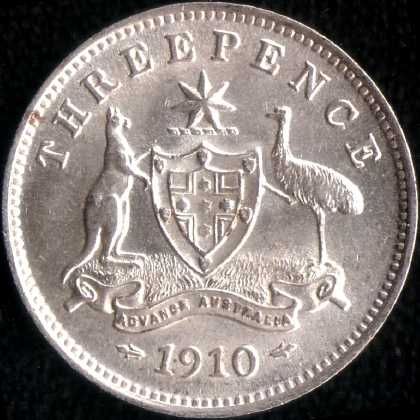
117 rim denticles. Gap over star. Uprights of REE aligned with denticles.
Reverse B - 1911-1936
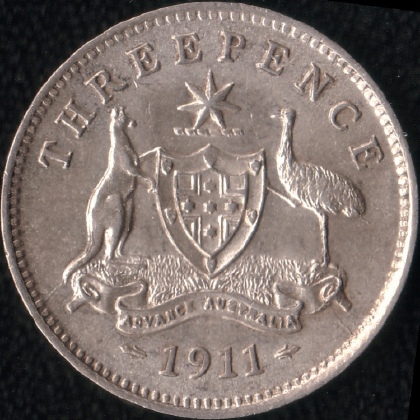
115 rim denticles. Denticle above star. Uprights of REE aligned with gaps between
denticles.
Reverse C - 1938-1964
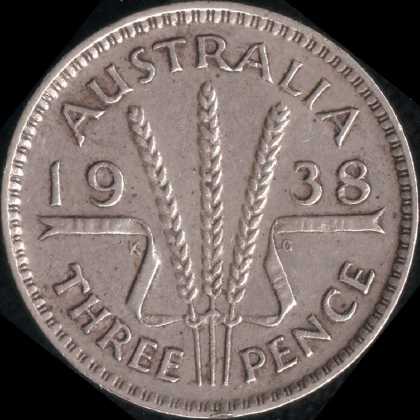
Used for all hreepences struck between 1938 and 1964 in Melbourne, Denver and
San Francisco.
Alternating thick and thin rim denticles, 83 of each.
Reverse D - 1951
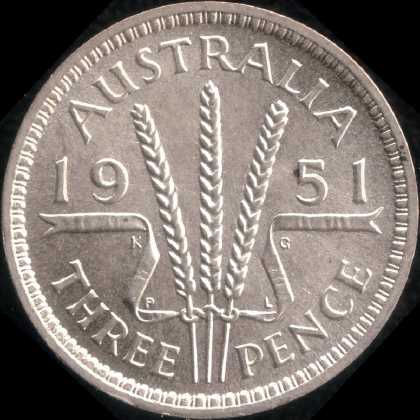
Used in 1951 for threepences struck at the Royal Mint in London.
Similar to reverse C but with 85 denticle pairs. PL mintmark in lower fold of
ribbon.
Issuing mints
The early coins of the series were all minted at the Royal Mint in London. From
1916 onwards all sixpences were struck in Melbourne with three exceptions.
In the years 1924 to 1926 inclusive, the Sydney mint shared the job of striking
threepences. There is no way known to distinguish the Melbourne and Sydney mintings
by inspecting the coins.
During World War II there was an increased demand for coinage and the Australian
mints could not handle the workload. In 1942 and 1943 a substantial portion of the
threepences were struck at the U.S. Mints in San Francisco and Denver and in 1944
the entire issue was struck at the San Francisco mint.
Finally, in 1951 some forty million coins out of a total issue of about 62 million
were struck by the Royal Mint.
Other Australian coins
Elizabeth II coins (1952-2022)

